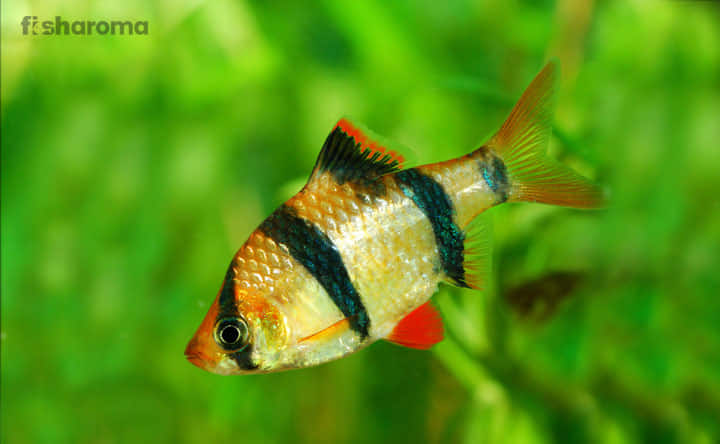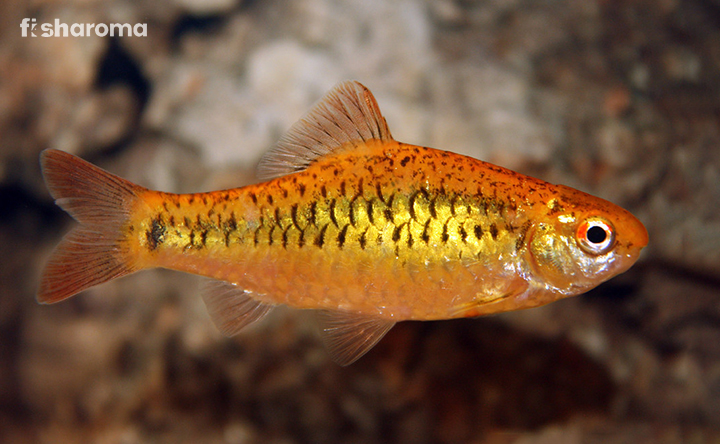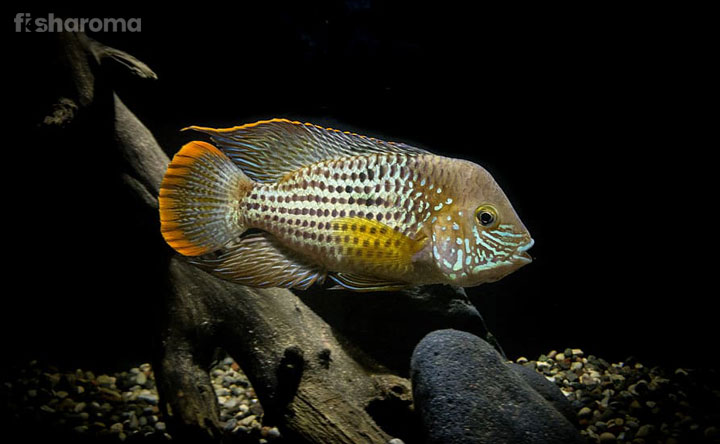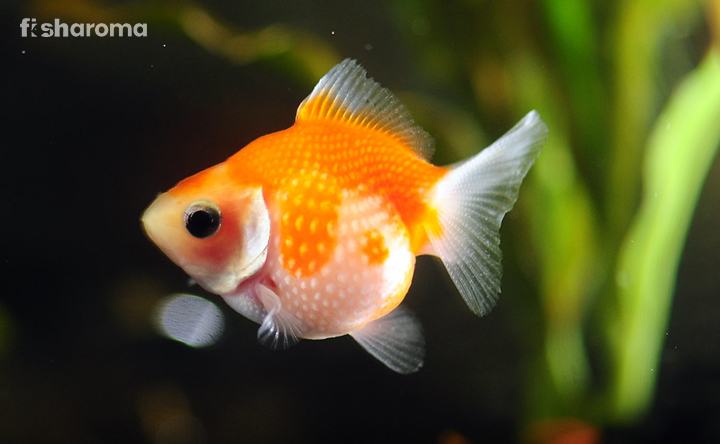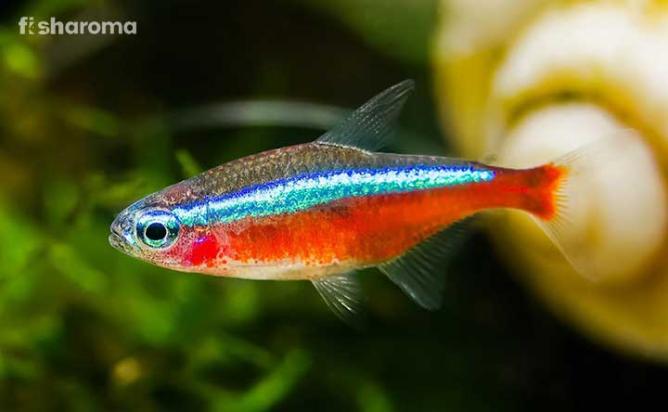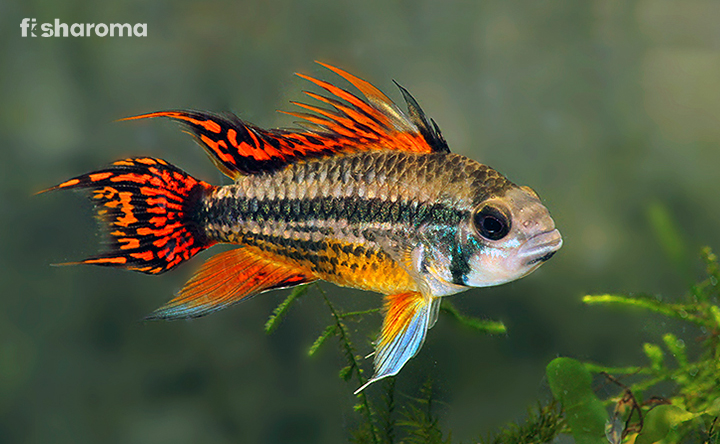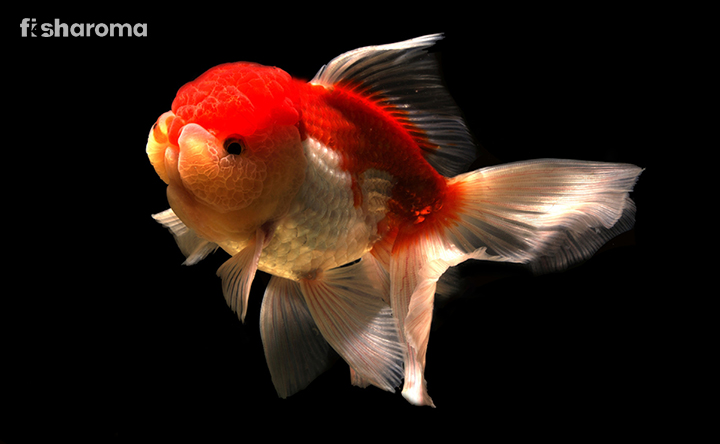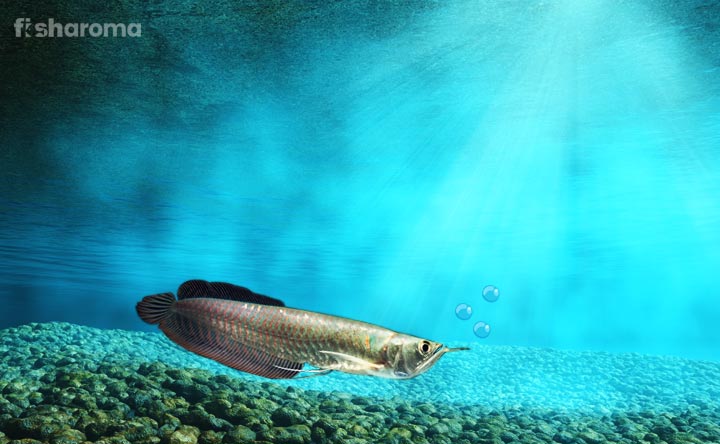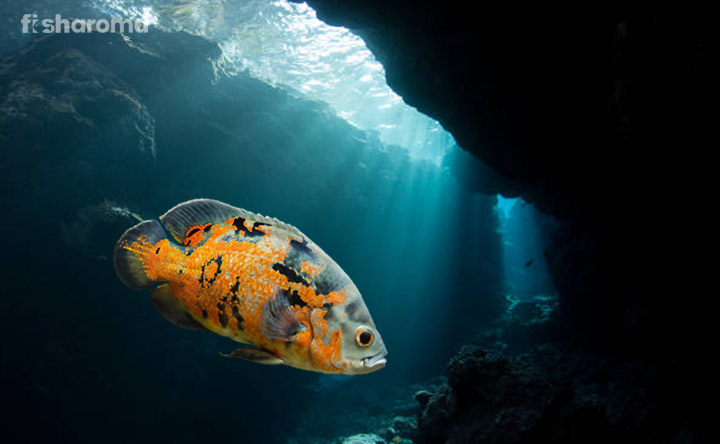Crowntail Betta – The Complete Care Guide for This Popular Freshwater Fish
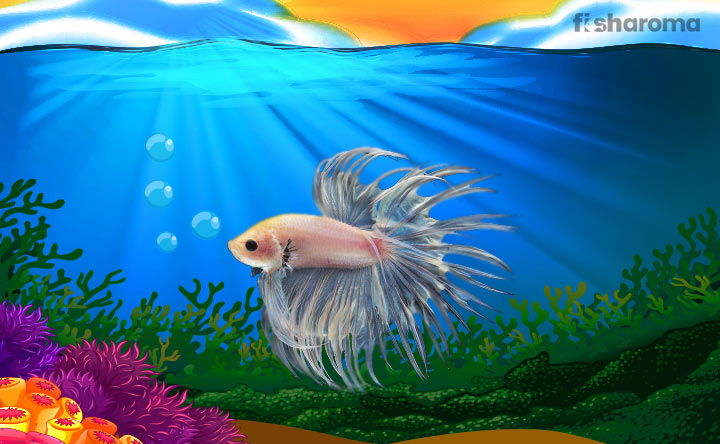
- Origin & Habitat of Crowntail Betta
- Appearance of Crowntail Betta
- Behaviour of Crowntail Betta
- Lifespan of Crowntail Betta
- Diet of Crowntail Betta
- Tank Requirements for Crowntail Betta
- Water Type for Crowntail Betta
- Compatibility of Crowntail Betta
- Breeding of Crowntail Betta
- Crowntail Betta Diseases
- Difficulties in Petting Crowntail Betta
- Summary
When it comes to aesthetic beauty, there is hardly a match for the Crowntail Betta. With an angelic appearance, this is what we call an aquarium lover’s delight. So, it is always in great demand. But what are the aspects of this fish that you need to keep in mind before hosting it in your home or in your office space? We bring before you everything that you needed to know about Crowntail Betta – from their food habits to their temperament, from their breeding process to their lifespan – we breakdown everything!
Key Specifications of Crowntail Betta
Before understanding how to take care of a Crowntail Betta, it is extremely important to have a thorough knowledge of their key specifications and features. The following table lists out their primary details.
| Scientific Name | Betta splendens |
| Family | Osphronemidae |
| Origin | Southeast Asia |
| Size | 2.4 – 3.1” (6 – 7.8 cm) |
| Color | Multi-color |
| Care Level | Moderate to high |
| Lifespan | 2-3 Years |
| Temperament | Feisty |
| Compatibility | Low |
| Tank Size | 10-Gallons |
| Diet | Carnivore |
Overview
Crowntail Betta is a variant of the Siamese Fighting Fish, commonly known as Betta. The Siamese-fighting fish derives their name from their aggressive personality. The term Betta is a modified version of the word ‘Bettah’ that refers to an ancient clan of warriors. They, especially the males, are extremely territorial by nature and often engage in fights when put together in the same vicinity. The Crowntail Betta is also known as Plakat in Thailand. The word Plakat has been derived from the Thai language and it means ‘biting fish’.
Origin & Habitat of Crowntail Betta
The popularity of Siamese fighting fish escalated during the mid-19th century when the locals organized “cockfight” like tournaments for these feisty beasts. In fact, it became so popular that the then king of Siam made it into a sport, and had it regulated and taxed.
Based on the shape and size of their fins, the Siamese fighting fish can be classified into more than a dozen categories, one of which is the Crowntail Betta.
The Crowntail Betta was first bred in 1997 by an Indonesian Betta breeder Achmad Yusuf. A type of Gourami that belongs to the Osphronemidae family, this fish is native to the Mekong Delta in Southeast Asia. Although their origin lies in Thailand, they can now naturally be found in Laos, Myanmar, Vietnam, and Cambodia as well. They are mostly concentrated in the Chao Phraya River in Thailand. They can be found in the standing waters of canals, floodplains, rice paddies, ponds, slow-moving streams, and swamps.
Let us now understand how they look like.
Appearance of Crowntail Betta
The Crowntail Bettas have their fin rays extended way beyond their membrane. As a result, their tail takes the appearance of a crown. They are also known as Fringetail since their fins resemble the fringes of a fabric. The design of their caudal fin distinguishes them from the other variants of Siamese fighting fish.
A striking feature of this fish is that they have a labyrinth organ that enables them to intake oxygen from the atmosphere apart from intaking it just from the water. This not only helps them in surviving in low-oxygen water but also outside of water for a short amount of time. They also have an upturned mouth that helps them eat from the surface of the water.
Size of Crowntail Betta
Crowntail Betta generally grows to 2.4”-3.1” in size and has a torpedo-shaped body. However, their caudal fins can grow up to a size of 8” in diameter. That is around thrice the size of their body which contributes to their magnificent appearance.
Color of Crowntail Betta
Crowntail Betta comes in a wide range of colors, sometimes presenting a plethora of colors in one tiny body. The most common colors for these fish are dark shades of red and blue. Captive breeding has resulted in producing green, pink, brown, purple, turquoise, pastel, orange and other colors in them. They are seen both in solid colors and in patterned colors.
In the wild, they display bright colors only when they are agitated. But in captivity, as we mentioned earlier, they can be selectively bred to imbibe an array of the aforementioned colors.
The males are more vibrantly colored than the females and feature long flowing fins. The females are usually not as brightly colored and are much short in comparison.
Behaviour of Crowntail Betta
One of the feistiest aquarium fish, the Crowntail Betta have been known to prefer isolation. Their territorial nature makes them unfit to cohabitate with another of their kind. In fact, they were bred for their fighting tendencies in the earlier days, which contributed to their fierce nature. Their sense of domination is reflected from how defensive they get in the presence of other males and sometimes even females. They are often seen in one-on-one combats with each other. Such is the level of their ferociousness that they are known to fight till death or till at least one of them backs off.
They should be ideally kept alone and if they are to be kept with a female for breeding purposes, they should be observed carefully.
Lifespan of Crowntail Betta
The average lifespan of a Crowntail Betta is 2-3 years. Generally, the Betta fish that we see in pet shops are six months old.
Diet of Crowntail Betta
In their natural habitat, Crowntail Betta usually feeds on insects and larvae. They are carnivores in nature and require a high dosage of protein to survive. However, it should be noted that they come with small stomachs. So, over-feeding will only cause them to perish earlier. Ideally, feeding them two-three times a day should keep them healthy and sound. They primarily feed on the water surface.
One great way to ensure a healthy feeding session is to follow the ‘Two Minute Rule’. What you essentially need to do is provide a total of two minute worth of food, meaning whatever food you are giving to your Betta, it should take two minutes for it to devour the food. After the completion of two minutes, whatever food is leftover, you need to pick it up.
Ideal food choices for a Crown tail Betta should include the following:
- Dried Bloodworms
- Daphnia
- Glassworms
- Tubifex
- White Worms
- Plankton
- Insect Larva
- Wingless Fruit Flies
- Brine Shrimp
- Beef Heart
Contrary to popular belief, they can’t survive on plant roots only. They need the presence of protein and fiber in their food.
If they are fed flake food, make sure that they are getting an adequate amount of frozen and possible live food also from time to time.
Betta pellets are a great food choice since they provide a well-balanced diet to Crowntail Bettas, which gives a boost to their overall metabolism.
Tank Requirements for Crowntail Betta
Selecting the appropriate tank for your pet fish improves their chance at survival. The following aspects must be given focus while choosing the tank for your Crowntail Betta.
Tank Size
Crowntail Betta needs a large space for surviving and growing. In a cramped up space like a small fishbowl, the chances of their large flowing fins hitting the aquarium walls and getting destroyed in the process are higher. Therefore, select a tank that is at least capable of holding ten gallons (38 liters) of water for a single Betta. If you are planning to put in more than one Betta or other fish of different species in the tank, naturally the size of the tank should be increased. Its ratio should be calculated by figuring out how much space the other fish will take in the aquarium.
Tank Lid
Next, make sure that you have a lid on your aquarium since Crowntail Bettas are known for jumping and leaping out of the water surface. Also, keep at least two inches of space between the lid and the water surface. This is because Bettas often come up to the surface to gulp air.
Filter
The addition of a nitrogen filter is of utmost importance as it will help increase the growth of beneficial bacteria that will, in turn, help maintain a healthy balance of nitrate and ammonia in the tank. Make sure the airflow is gentle as strong currents in the water can endanger the fins of the Bettas.
Nature of Lighting
Too much light is not good for Bettas because they thrive in damp, dark environment. Therefore, keep them away from direct sunlight and install a dim light in your tank. If you can put on a timer that will make sure that the light stays on for 12 hours and stays off for the rest of the day, then it is even better.
Presence of Flora
Adding plants is always a good idea since the natural habitat of Bettas is in the marshy land, rice paddies and swamps. However, don’t clutter it up too much. In order to release beneficial natural acids for your Betta, you can also add Indian almond leaves to your tank.
Ornaments
Since Bettas love hiding spots, therefore adding a small aquatic cave or rocks will help create a natural environment for it. However, make sure that they don’t have rough or pointy edges since that may harm the delicate fins of your Betta.
Substrate
Adding fine sand at the bottom of the tank will also help create a natural environment for your fish.
Now that you know how to set up the ideal tank for your Betta, let us help you understand the things that you need to keep in mind when selecting the water for your tank.
Water Type for Crowntail Betta
Although Crowntail Betta can survive in pretty rough waters in their natural habitat, proper care should be taken when they are in a controlled environment of an aquarium. The water for your fish tank should fulfill the following criteria:
Temperature
Make sure the temperature of the water stays between 76°-80° F (24°-27° C). We also recommend you to install a submersible tank heater to keep the water consistently warm. These fish thrive in warm water. Sudden fluctuations in the water temperature can cause harm to their immune system. If you have a 10-gallon (38 liters) tank, then a 50-watt heater is ideal. Go for a higher wattage heater if you have a larger tank.
pH Level
Try to keep the pH level of water within 6.4-7.0. You can increase the pH level of the water by adding two teaspoons of baking soda per 10 gallons (38 liters) of water. Reversely, you can decrease the pH level by adding peat moss or driftwood to the aquarium.
Hardness
The hardness of the water should be within 2-5 dKH (Carbonate Hardness).
Chlorine Level
Add dechlorinator to your tap water if it has a high level of chlorine in it.
Replacement Procedure
Replace one-third of the water in your tank every 3-4 days. Replacing the whole water at once will upset the biological balance of the fish’s environment. A gradual change allows them to adjust themselves to the pH level and temperature of the water.
Cleaning Method
Do not use soap or disinfectants to clean the ornaments in your aquarium since it is harmful to the Bettas. Use plain lukewarm water for cleaning. For removing waste materials and other debris from the bottom of the tank, you can use a turkey baster.
Compatibility of Crowntail Betta
Crowntail Bettas are not necessarily known for being congenial or friendly. Therefore, thorough research on their compatibility issues should be done. If you are planning to keep more than one Crowntail Betta in your tank, then you should have an understanding of their gender equations. Here are some pointers that should come in handy for you.
Male-Male Compatibility of Crowntail Betta
Since we mentioned earlier that the Crowntail Betta is a ferocious beast and is prone to engage in fights with other males of their kind, it is therefore advised to keep one male Crowntail Betta per tank. In fact, even if two male Crowntail Bettas are kept in separate tanks but are in plain sight of each other, even that might cause stress for them. They even get defensive when they see their own reflection in a mirror. Yes, that’s how insecure they are!
Male-Female Compatibility of Crowntail Betta
Keep the males and females together for breeding purposes only, that too for a short period of time. Although the males are less aggressive towards the female, chances of a fight breaking in between them are always there.
Female-Female Compatibility of Crowntail Betta
Females can co-exist with each other better than their male counterparts given that there are enough hiding spots for each of them. A sorority of five female Crowntail Bettas is ideal if you have a large tank.
Let us now look at the suitable tankmates for Crowntail Betta.
Suitable Tankmates for Crowntail Betta
In choosing other species as tankmates for your Crowntail Betta, please ensure that there is no one in the tank whose size, color or fins might resemble your betta, since it may feel threatened by it. Any bottom-feeding fish is also suitable because Crowntail Betta spends most of their time at the top level of the water. Give priority to non-aggression and non-competitiveness while selecting the mates for your Betta. Some good companions for Crowntail Betta are:
Neon Tetras
Belonging to the characin family, it is native to the clearwater and blackwater streams of the Amazon basin in South America. It has a silver-white abdomen and a light blue back.
African Dwarf Frog
Native to Equatorial Africa, these aquatic frogs spend most of their time underwater but do come up to breathe because they have lungs instead of gills. If you keep them in your aquarium, make sure you have a small cave in the tank that will help it rise to the water surface.
Cory Catfish
Distributed across South America, they are a type of freshwater fish that belong to the Callichthyidae family. They come in a variety of shapes and colors.
Feeder Guppies
One of the most commonly known tropical fish, they are bred as food in overcrowded tanks. They belong to the Poeciliidae family.
Ghost Shrimp
Deriving their name from their transparent ghostly appearance, they are known for their excellent camouflage ability. They belong to the Palaemonidae family.
Red Cherry Shrimp
Native to Taiwan and belonging to the Atyidae family, they are an ideal choice for those who prefer non-aggressive beings in their aquarium.
When you introduce new companions in your tank for your betta, keep them in a separate transparent enclosure for at least a couple of hours before releasing them. Look for any threatening reactions from your betta such as the expansion of gills or violent movements. If you encounter these signs, then it clearly means that your betta does not like its new companions.
Breeding of Crowntail Betta
Crowntail Bettas have a short lifespan. They are most successful at breeding when they are just under a year old.
They breed in bubble nests and the males are extremely protective about their bubble nest. The males are also pretty violent during courtship. So, make sure that the females are not kept alongside them aside from the breeding period.
The male creates a bubble nest at the water surface by blowing air to the water. Just before spawning, both the male and female display bright coloration and start circling each other under the bubble nest. This is followed by the male wrapping himself around the female, which leads to the female expelling the eggs, which gets immediately fertilized. When the eggs start sinking to the bottom of the tank, the males begin scooping them up and spitting them into the nest.
After this, the next mission for the male is to tend the brood. This is the point where you should remove the female from the tank as the male becomes over-protective of his babies, and can harm the female if it feels vulnerable. Such is his dedication towards parenting is that each time an egg falls out of the nest; the male spit it back into the nest.
After one-two days, the eggs start hatching. The babies feed off the yolk sack for the next three days. Even during this period, the male parent picks up any fry that falls out of the hatchet and put it back to the nest. However, despite being protective, it is recommended that at this point, you should remove the male parent from the tank because it sometimes eats its own baby once they start swimming, probably confusing them with some food.
The babies should be fed in small yet regular quantities daily for it to grow healthy.
Crowntail Betta Diseases
One of the most common reasons for death among Crowntail Betta in aquariums is overfeeding. It results in constipation, which leads to an incorrect nitrogen cycle in them, which in turn, is one of the rampant reasons for death in Bettas. Two major signs of constipation in Bettas are swollen body and popping of eyes out of their heads.
Other common diseases seen in this variant of Betta includes fin rot, tail rot, gills mites, dropsy, etc.
Difficulties in Petting Crowntail Betta
As beautiful as they are, it cannot be denied that Crowntail Bettas are one of the fiercest freshwater fish. So, if you are looking for a peaceful fish for your aquarium, then Crowntail Betta is not for you. Also, if you are one of those who prefers to keep the same variant of a particular fish together in your tank, this might not be the ideal choice, unless you keep a bunch of female Bettas together. And, as mentioned earlier, female bettas are not as brightly colored and lack long flowing fins.
Interesting Facts about Crowntail Betta
- Crowntail Betta comes in 25 unique colors.
- When males feel threatened, they flare their fins.
- The healthier a Betta is, the brighter their color will be. However, this only applies to the males since the females naturally come in monochromic colors.
- They are an intelligent creature capable of learning tricks to perform. You can train your Betta to leap through a loop or push a ball into a goal underwater.
- Females display an egg-shaped spot on their body when they are ready to mate.
Summary
There is a reason why Crowntail Betta is one of the popular choices for aquarium enthusiasts. They come with beautiful fins, bright colors and are easy to take care of. The only downside is their aggressive nature, although some people would see it as an attractive quality if that is what you are into. They are extremely territorial and love having their own spaces.
Their living conditions and eating habits don’t require you to put heavy efforts. So, they are pretty manageable and a must-have for those who love to pet fish. After all, who wouldn’t like to have a fish that has one of the prettiest fins in the aquatic world to be in their tank?
Similar Saltwater Fishkeeping Guide
Take a look into some of our other saltwater fish care guides.
- Rainbow Shark: Interested in keeping a colorful Shark in your freshwater tank? Here’s the care guide of Rainbow Shark.
- Pictus Catfish: Known for their intrinsically designed fins, Pictus Catfish is a great addition for your tank. Find out how to take care of it from here.
- Killifish: Tiny, feisty and colorful, Killifish definitely has a personality of its own. Learn about them more from this space.

